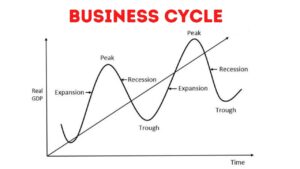In our last installment, we wrote about our approach to Investing in Innovation, and how we are expressing that theme in client portfolios. This quarter, resurgent market volatility warrants revisiting the global landscape and updates to our view on the trajectory of economic and market conditions.
Key Points:
- Global growth continues to slow as policymakers have entered a coordinated easing cycle
- Though bond yields have declined, recession probability remains relatively low
- Yield curve inversions are poor timing indicators and Fed cuts historically support equity markets
- We reduced risk in mid-July by lowering equity allocations and introducing Alternative assets
As previously discussed, the global economy continues its deceleration as lagged effects of the prior cycle’s monetary tightening, flagging fiscal stimulus and escalating political and trade tensions have pulled down global Purchasing Mangers’ Indexes (PMIs). PMIs are important indicators as they give hints as to the future direction of global economic activity. No doubt, wobbly PMIs are cause for some degree of concern.
Figure 1: Slow Your Roll…12-month Global Manufacturing PMI Change from 2018


Source: Ned Davis Research
Policy makers have been monitoring the continuing slowdown and given the mild inflationary backdrop, have already started on the next easing cycle. In addition to China’s 88 easing moves over the last 18 months, there have been 23 other major central bank interest rate cuts in the last three months. These cuts have led to a rapid expansion of negative-yielding debt, which is now nearing a worldwide value of $16T dollars. This phenomenon has pulled down US term premiums (the portion of a bond yield attributable to the length of time of the maturity). However, because US growth expectations are still healthy, global demand for US Treasuries has pulled US yields to near all-time lows. Bottom line, US yields are declining due to persistent growth expectations, not because markets are suddenly forecasting a near-term recession.
Figure 2: $16T of Negative-Yielding Global Debt Pulls Down US Term Premiums and Yields

The bond market has reacted faster than the Fed has cut short-term rates, which has now resulted in the first yield curve inversion since 2006. While inversions have preceded recessions in the past, they do not predict the timing of recession. Also, inversions are not predictive by themselves – they are part of a broader set of indicators, most of which are still suggesting slowing growth. Historically, equity markets tend to respond well to the initiation of easing cycles, regardless if a recession materializes or not.
Figure 3A: Yield Curve Inversions Lead Recessions, but Timing Varies Greatly

Source: Cornerstone Macro
Figure 3B: Equity Markets Tend to Respond Well to Rate Cuts

Source: Ned Davis Research
On balance, odds favor a persistently positive, albeit slowing global growth outlook – not an imminent recession. Our research suggests while equity market volatility remains elevated and bond yields have plunged, these responses are byproducts of the vacillating trade war rhetoric and central banking interventions. Despite the recent gyrations in global markets, the weight of the evidence suggests the current economic expansion still has a way to go.
Figure 4: Recession Still Looks to be 18 Months Away…Again.

Source: Ned Davis Research
Since Q1 of this year, our research tools have been suggesting increased volatility in the second half of 2019. In July, we proactively reduced risk by lowering equity exposure and earlier in the year introduced alternative assets such as gold, infrastructure and liquid hedge funds into client portfolios. These assets lower equity market sensitivity and broaden an investor’s ability to capture uncorrelated return streams, ultimately providing a better risk/return proposition and a smoother ride during volatile times. Of course, we are always happy to discuss our market outlook and investment process – for more information on our institutional approach to managing risk, please contact your Relationship Manager.
Figure 5: Alternatives Improve the Risk/Return Profile of a Portfolio

Source: CFA Institute Research Foundation, 2019









